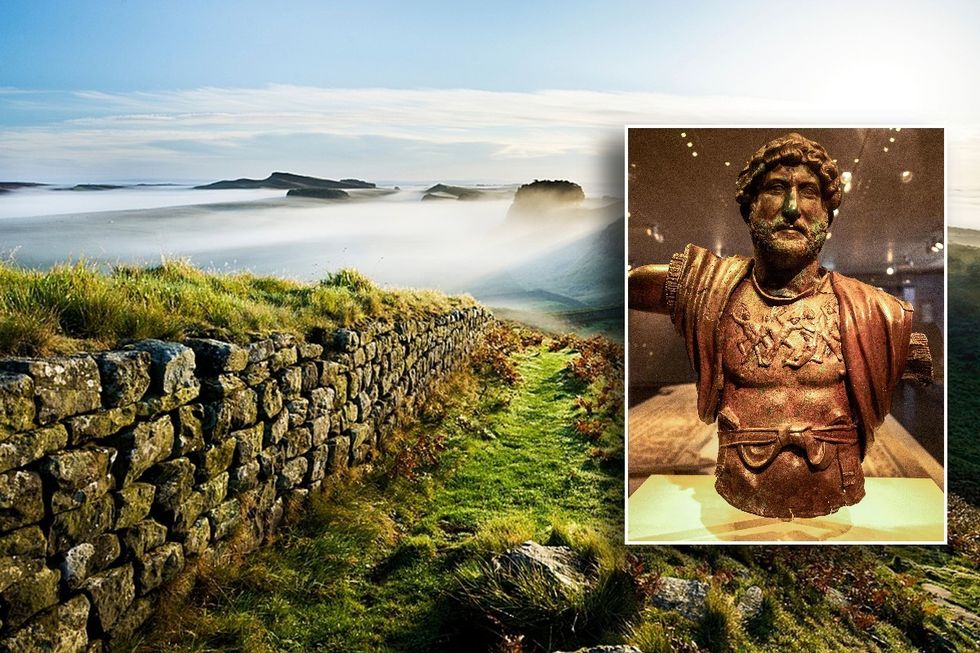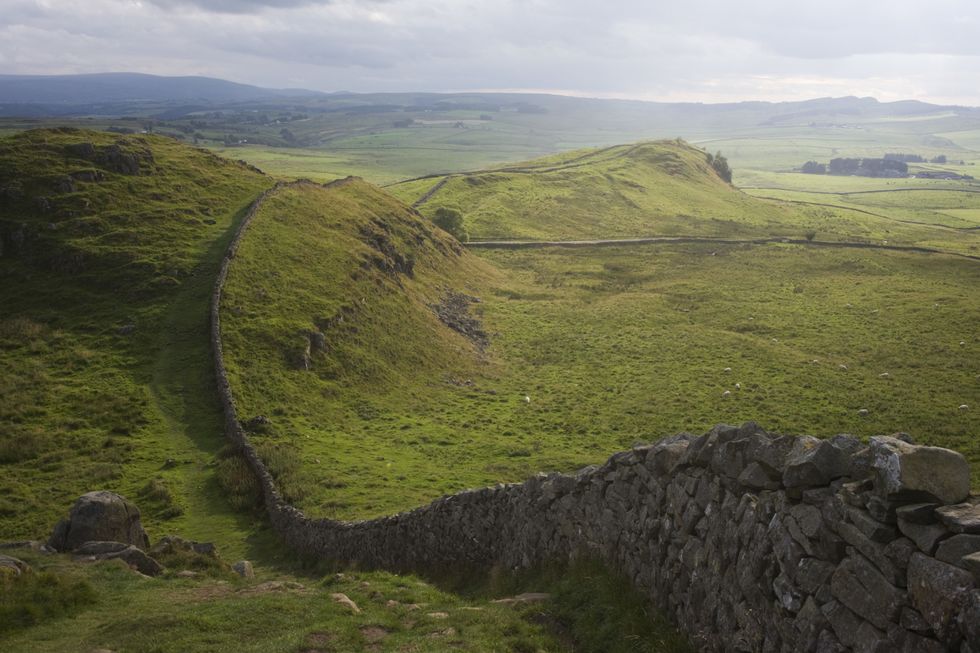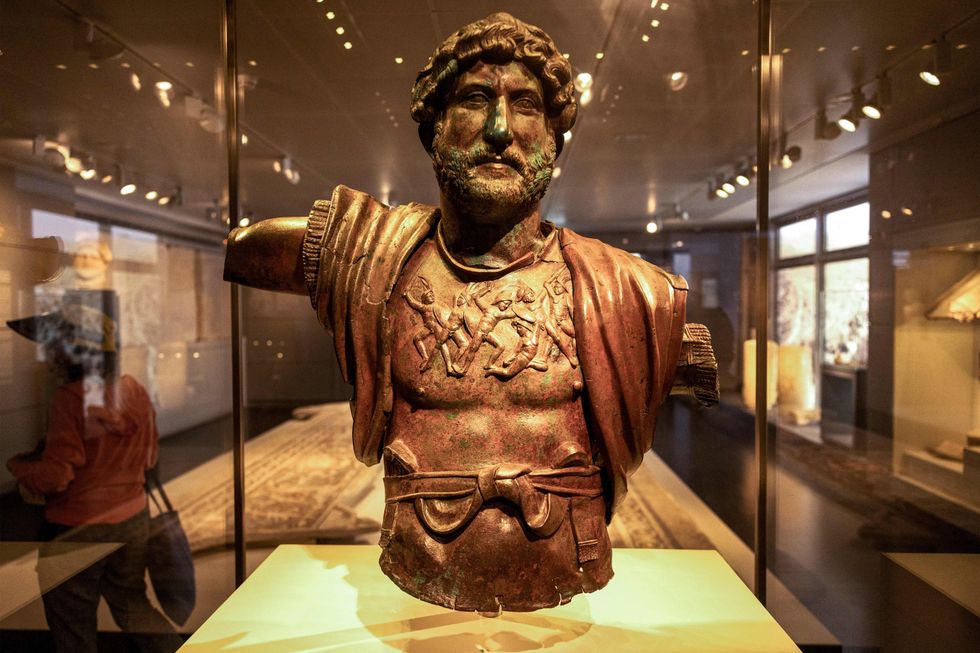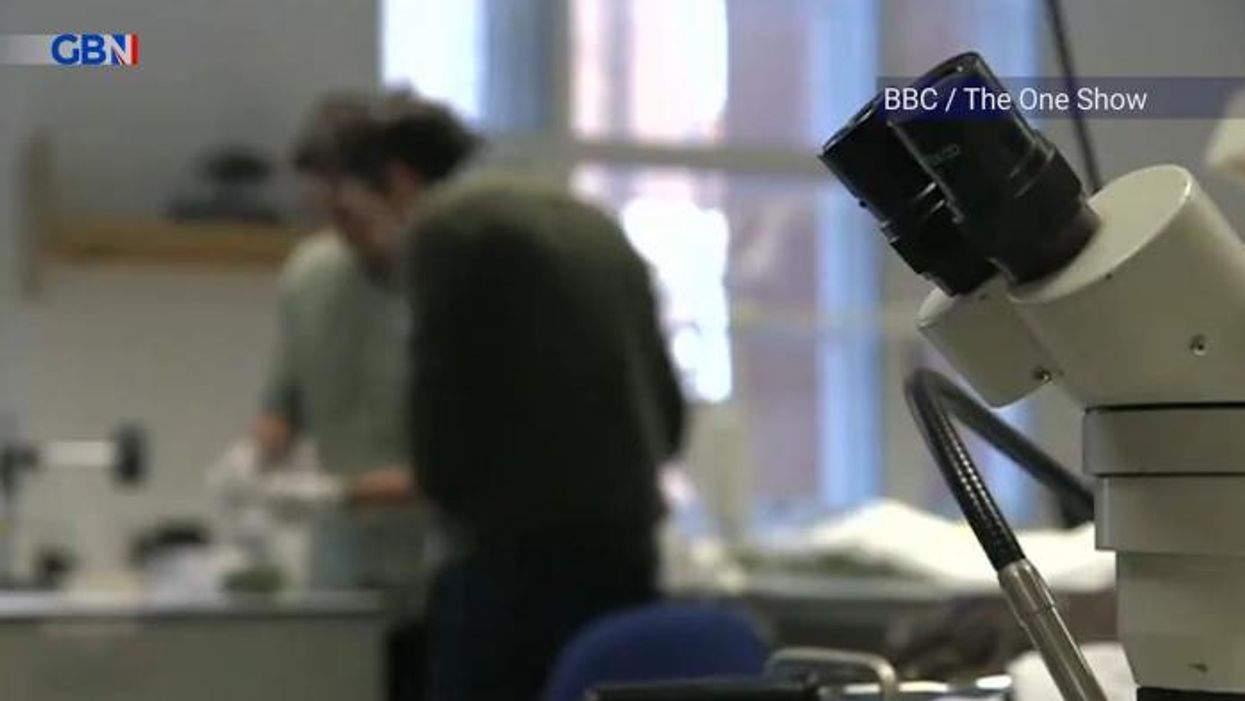Hadrian’s relationship with Antinous was well documented
Don't Miss
Most Read
Trending on GB News
English Heritage has been blasted as “totally misguided” after branding Hadrian’s wall a “gay icon” as the Emperor, whom the wall is named after, enjoyed several gay relationships.
Academics rushed to mock the conservation charity for its claim with experts accusing the organisation of trying to be “hyper trendy”.
The 1900-year-old structure, which marked the border between Roman Britannia and unconquered Caledonia, was built by the empire to protect Britain from the “barbarians” north of the border.
Addressing its members in an email, the company sent an article highlighting that Emporer Hadrian enjoyed several gay relationships despite being married and that the monument is a “symbol of England’s queer history”.

Hadrian's wall has been branded a 'gay icon'
PA/Getty Images
They also outlined the history of Hadrian’s lover Antinous, who was born in modern-day Turkey.
English Heritage said: “To understand Hadrian's Wall, you have to understand the Roman emperor who built it – his career, his life and the times in which he lived.”
Academics took aim at the charity following the email, accusing the organisation of “reading history backwards”.
Professor Frank Furedi, author of the upcoming book The War Against The Past, accused English Heritage of trying to appear “hyper trendy”.
LATEST DEVELOPMENTS:
English Heritage was accused of 'reading history backwards' over the claims
Getty Images
Furedi told MailOnline: “English Heritage appears to be in the business of reading history backwards and discovering LGBTQ culture in the most unlikely places.”
Jeremy Black, an emeritus professor of history at Exeter University, added: “The idea that Hadrian's Wall is an exposition of what can be seen as queer history is totally misguided.”
However, other experts disagreed with human rights campaigner Peter Tatchell saying it was “important that this hidden history is revealed”.
National Museums Liverpool writes that “Although Hadrian was married, ancient sources reveal that he also had several homosexual relationships.

Hadrian’s relationship with Antinous was well documented by Roman sources
Getty Images
“Homosexual relationships were not considered unusual in ancient Rome. A Roman man was free to choose sexual partners of either gender so long as he remained the active partner in any sexual encounter.
“It was therefore common for Roman men to enter into sexual relationships with younger men.”
The museum added: “Hadrian became enamoured with Antinous, a younger man renowned for his beauty and invited him to join his tours of his Empire.
“In AD 130 Antinous drowned in the river Nile and Hadrian was devastated. Reports said that Hadrian wept for him ‘like a woman’. Hadrian mourned Antinous’ death intensely and publically rather than in private as was custom.”
“Statues of Antinous were built throughout Hadrian’s Empire, he was deified (worshipped as a God), and a new city named Antinopolis was founded near the site of his death.”
English Heritage also lists several other sites as being linked to England’s “queer history” including Chiswick House, Walmer Castle, Farleigh Hungerford Castle, Eltham Palace and Rievaulx Abbey.









